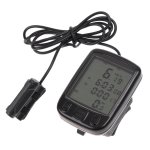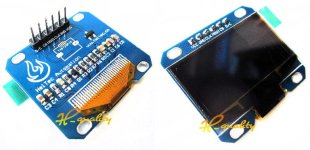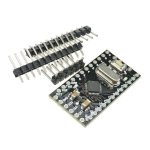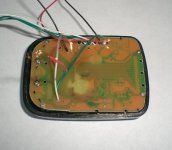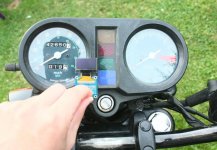spata
1 W
- Joined
- Jan 26, 2013
- Messages
- 58
I have built a few home made handlebar displays, but they always looked.... well, a bit home made!
The problem was always with the housing, so I thought I would try and re-purpose something else. This is what I came up with;

It is a cycle computer with the guts ripped out and a 128x64 OLED display and Arduino inserted instead.
Here are a few screen shots of just some of the modes I have programmed.
The bargraph at the left hand side is a fuel gauge and shows the battery remaining at any time.
View attachment 3
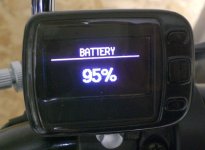
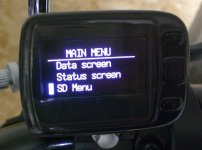
I searched to see if I could find someone who could recommend a suitable enclosure but found nothing, so this topic is here for any others who are looking. The original cycle computer claimed to be waterproof, so it should be possible to make this one waterproof as well. The components are VERY tight but do fit, the really neat thing is that I managed to reuse the 3 switches so that you can have control of menu's etc or indeed other features of the bike if required (for example speed switch). In this first post I will only note the ‘golden nuggets’ of what I found.
- The actual cycle computer that I used was an SD-563A by Sunding, size (5.5cm x 4cm x 1.8cm).
- The display I used was a 1.3" SPI Serial 128X64 OLED, size was 32.0MM * 35.5MM * 4.1MM.
- I used an Arduino mini pro. I had to unsolder and remove the reset switch, as there was not enough room for it and I also removed the onboard LED(s) so that there is no light interference.
- Communication is via i2c, and I also wired the serial lines for datalogging and code download.
- I used U8Glib library for the Arduino code to run the 128X64 display.
- I used i2c_Anything library to get data to and from the Arduino (this allows you to send different data types int, float, bytes, etc between Arduinos very easily).
Here is a picture of the inside of the unit showing the Arduino, as you can see space is tight.
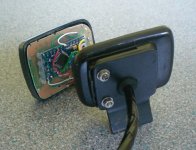
If anyone is interested or wants more details then let me know and I can elaborate with more detail.
- Spata
The problem was always with the housing, so I thought I would try and re-purpose something else. This is what I came up with;

It is a cycle computer with the guts ripped out and a 128x64 OLED display and Arduino inserted instead.
Here are a few screen shots of just some of the modes I have programmed.
The bargraph at the left hand side is a fuel gauge and shows the battery remaining at any time.
View attachment 3


I searched to see if I could find someone who could recommend a suitable enclosure but found nothing, so this topic is here for any others who are looking. The original cycle computer claimed to be waterproof, so it should be possible to make this one waterproof as well. The components are VERY tight but do fit, the really neat thing is that I managed to reuse the 3 switches so that you can have control of menu's etc or indeed other features of the bike if required (for example speed switch). In this first post I will only note the ‘golden nuggets’ of what I found.
- The actual cycle computer that I used was an SD-563A by Sunding, size (5.5cm x 4cm x 1.8cm).
- The display I used was a 1.3" SPI Serial 128X64 OLED, size was 32.0MM * 35.5MM * 4.1MM.
- I used an Arduino mini pro. I had to unsolder and remove the reset switch, as there was not enough room for it and I also removed the onboard LED(s) so that there is no light interference.
- Communication is via i2c, and I also wired the serial lines for datalogging and code download.
- I used U8Glib library for the Arduino code to run the 128X64 display.
- I used i2c_Anything library to get data to and from the Arduino (this allows you to send different data types int, float, bytes, etc between Arduinos very easily).
Here is a picture of the inside of the unit showing the Arduino, as you can see space is tight.

If anyone is interested or wants more details then let me know and I can elaborate with more detail.
- Spata


